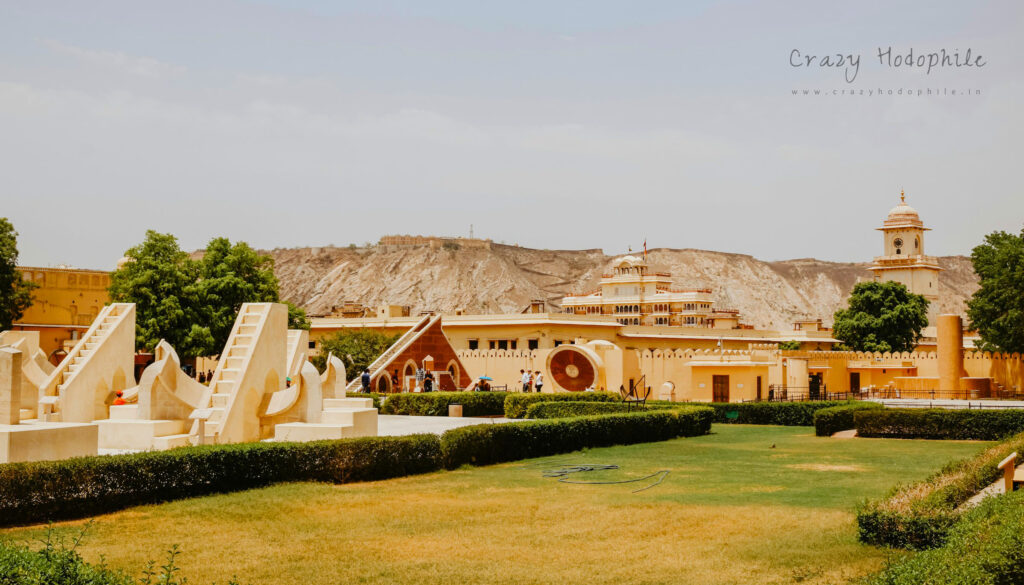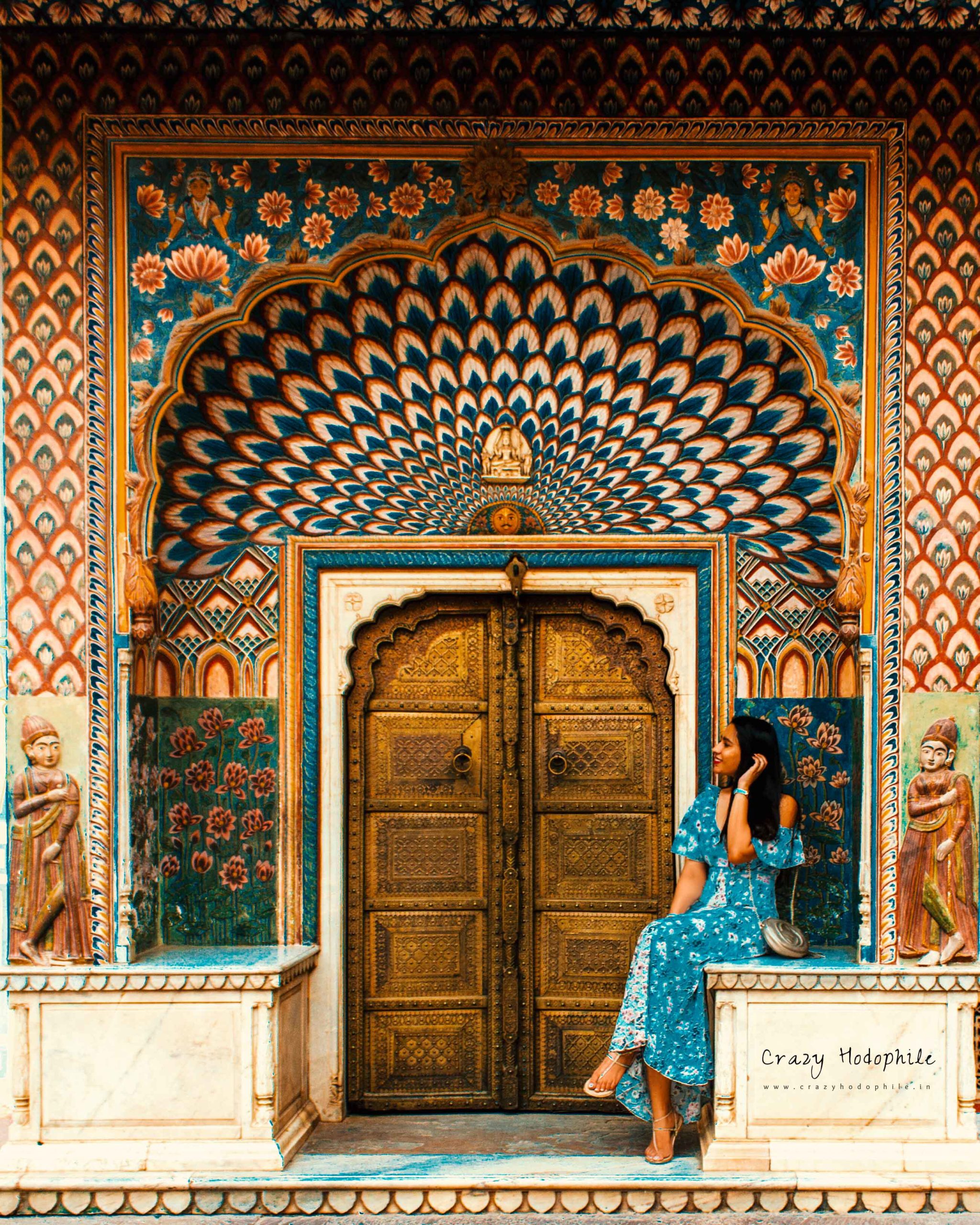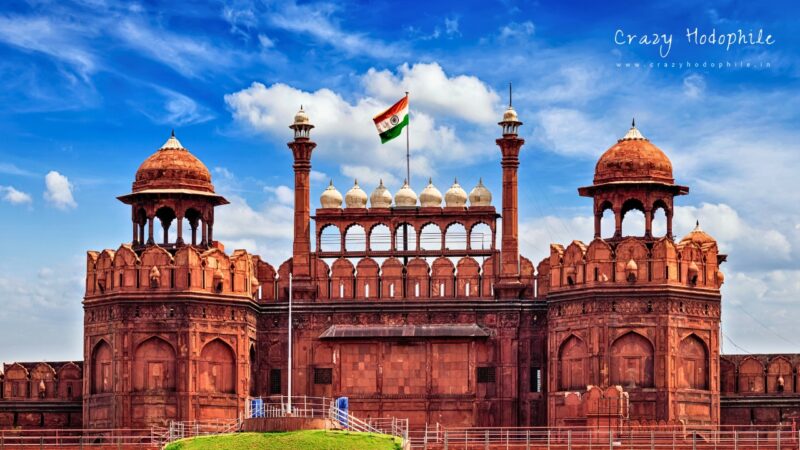Jantar Mantar Jaipur: A Historic Astronomical Observatory | Crazy Hodophile | 2024
Jantar Mantar, nestled in the vibrant heart of Jaipur, also known as the Pink City, is a fascinating astronomical observatory that captures the essence of India’s rich cultural and scientific heritage. Built in the early 18th century by the visionary Rajput King Sawai Jai Singh II, this architectural wonder is a must-visit for anyone with a penchant for history, architecture, or astronomy.
Table of Contents
Overview
Jantar Mantar in Jaipur has a total of 19 astronomical instruments. These instruments were designed for observing celestial bodies (stars and planets) and include various sundials, a giant hemisphere, and other devices to measure the positions of stars and planets. Some notable instruments are:
- Samrat Yantra: The world’s largest sundial.
- Jai Prakash Yantra: Two hemispherical structures used for determining the coordinates of celestial objects.
- Rama Yantra: Used to measure the altitude and azimuth of celestial bodies.
- Chakra Yantra: Measures the declination of the sun.
- Nadi Valaya Yantra: Measures the time based on the shadow cast by the sun.
As a UNESCO World Heritage Site, Jantar Mantar invites visitors to step back in time and marvel at the scientific achievements of a bygone era. The observatory’s giant hemisphere and other meticulously crafted devices offer an unparalleled glimpse into the methods used by ancient astronomers to chart the movements of stars and planets.

History
The history of Jantar Mantar dates back to 1728 to 1734 when it was constructed by Maharaja Sawai Jai Singh II, the founder of Jaipur. Known as a scholar with a profound interest in mathematics and astronomy, Maharaja Sawai Jai Singh II envisioned an observatory that could precisely measure time, predict astronomical events, and determine the positions of celestial bodies. His dedication to astronomy led him to build not only Jantar Mantar in Jaipur but also similar observatories in Delhi, Ujjain, Mathura, and Varanasi. The primary purpose of Jantar Mantar was to study the movement of celestial bodies and perform accurate astronomical calculations. It suffered damage in the 19th century due to heavy monsoon rains. It was restored in the 2000s, with efforts to repair and preserve its historical structures and astronomical instruments.
Scientific Legacy
Jantar Mantar’s instruments, made from stone and marble with intricate markings and brass fittings, highlight the advanced scientific knowledge and precise engineering of the period. These instruments were used to create astronomical tables and predict the movements of the sun, moon, and planets.
Recognition and Preservation
The Jantar Mantar is safeguarded by the Rajasthan Monuments Archaeological Site and Antiquities Act of 1961, specifically under Sections 3 and 4. It was granted the status of a nationally significant monument in 1968. Recognizing its profound universal value and its significant role in the realm of advancing scientific knowledge, Jantar Mantar in Jaipur was inscribed as a UNESCO World Heritage Site in 2010. Today, it stands as a revered symbol of ancient India’s scientific and architectural prowess, attracting scholars, tourists, and history enthusiasts from various corners of the globe.
Instruments
The observatory houses a collection of nineteen advanced instruments designed to accurately measure time, predict eclipses, track the movements of major stars during Earth’s orbit around the Sun, determine planetary declinations, and calculate celestial altitudes and related ephemerides. Each instrument plays a crucial role in expanding our understanding of the cosmos and unlocking its mysteries. The instruments are:
- Chakra Yantra
- Dakshin Bhitti Yantra
- Digamsa Yantra
- Dhruva Darshak Pattika
- Disha Yantra
- Jai Prakash Yantra
- Kapali Yantra
- Kranti Vritta Yantra
- Laghu Samrat Yantra
- Misra Yantra
- Nadi Valaya Yantra
- Palbha Yantra
- Rama Yantra
- Rashi Valaya Yantra
- Samrat Yantra
- Shastansh Yantra
- Unnatamsa Yantra
- Vrihat Samrat Yantra
- Yantra Raj
Light and Sound Show
- Jantar Mantar also offers mesmerizing light and sound shows in the evening that narrate the history and significance of the site and Rajput King Sawai Jai Singh II. These shows use lighting and sound effects to enrich the visitor experience, offering both education and entertainment. The show is available in both English and Hindi languages.
- The timing of the Light and Sound Show at Jantar Mantar in Jaipur may vary, so it is advisable to confirm the schedule and availability with the site officials before planning your visit.
Some Interesting Facts
- The instruments at Jantar Mantar were designed to observe and measure celestial phenomena with the naked eye.
- The Samrat Yantra is the world’s largest stone sundial. This massive instrument stands 27 meters (88.6 feet) tall and can measure time with incredible accuracy, just two seconds.
- The observatory’s unique design and equipment have inspired modern scientists and engineers.
- The monument is equipped with tools that function in three distinct sky coordinate systems: the local horizon-zenith system, the equatorial system, and the ecliptic system.
- In Sanskrit, “Jantar Mantar” translates to “calculating instrument.” This name is derived from two Sanskrit words: “yantra,” meaning “instrument” or “machine,” and “mantrana,” meaning “consult” or “calculate.” Thus, “Jantar Mantar” signifies an instrument used for calculations or consultations.
Opening and Closing
The opening and closing timings are as follows: from 9 AM to 5 PM.
Best Time to Visit
The best time to visit Jantar Mantar is during the early morning or late afternoon when the sunlight enhances the beauty of the instruments and creates stunning shadows.
Entrance Fee
- Entrance fee for Indian general citizens: Rs 50
- Entrance fee for Indian students with valid student card: Rs 15
- Entrance fee for foreigners: INR 200
Dos and Don’ts
- Follow the instructions of the guides or authorities. Take photographs and videos for personal, non-commercial use.
- Do not climb on or touch the instruments.
- Avoid carrying food and beverages inside the premises.
Suggestion: We recommend checking with authorities or on-site signage for any specific restrictions or guidelines regarding photography and videography. Due to the extreme heat in Jaipur during peak summers, it is advisable to carry a water bottle, sunglasses, and a cap to avoid dehydration and heat-related issues.
How to Reach
- Jaipur International Airport is the closest airport, located approximately 12 km from Jantar Mantar. You can take a taxi from the airport, and the journey will take about 25 to 30 minutes, depending on traffic conditions.
- The closest railway station to the Jantar Mantar is Jaipur Railway Station, located around 5 to 6 kilometers away. You can easily reach there from the railway station in about 15 minutes by auto-rickshaw and taxi.
- Sindhi Camp Bus Station is Jaipur’s main bus terminal, situated about 3 km from Jantar Mantar. From there, you can reach there by taxi, auto-rickshaw, or city bus.
Location Map for Jantar Mantar
What’s Worth Seeing Near Jantar Mantar, Jaipur
- City Palace – Adjacent to Jantar Mantar, this beautiful palace complex features museums, courtyards, and gardens, showcasing a blend of Rajasthani and Mughal architecture.
- Hawa Mahal – Located 850 meters from Jantar Mantar, this stunning five-story palace is known for its intricate latticework and small windows designed for royal women to observe street festivals without being seen.
- Govind Dev Ji Temple – Situated 750 meters from Jantar Mantar, this significant Hindu temple is dedicated to Lord Krishna and is renowned for its beautiful architecture and vibrant religious ceremonies.
- Birla Mandir – A modern Hindu temple made of white marble, dedicated to Lord Vishnu and Goddess Lakshmi. Known for its architectural beauty and serene environment, it is 4.8 km from Jantar Mantar.
- Nahargarh Fort – Perched on the edge of the Aravalli Hills, this fort offers panoramic views of Jaipur and houses several historic structures. It is located 13.6 km from Jantar Mantar.
- Shree Khole Ke Hanuman Ji Temple – Around 5 km from Jantar Mantar, this temple is highly revered by devotees of Lord Hanuman and is known for its peaceful and spiritual ambiance.
References –
(a) WHC UNESCO



